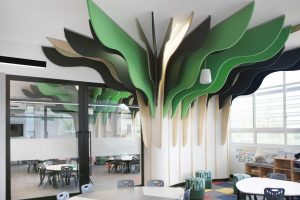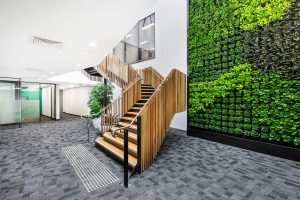How to control costs without compromising quality?
Chris Deering, Managing Director
So often, these days, project briefs come with the unwritten (or written) requirement to keep costs low and work within very tight deadlines. It makes
sense because it today’s world, there is a necessity, no, an imperative, to get more done with less. Less time, less money, less resources. And while
this puts a lot of commercial interior design and fit out outfits in a difficult position, it’s by no means an impossible one.
If so-called “rush jobs” with grand visions and modest budgets are becoming increasingly common in the industry, so are the means with which satisfaction,
if not adoration, can be achieved. It is not always the case but experience has taught us that applying a measured approach, makes a marked difference
during the beginning, middle and end of projects.
The “knock” on just knocking it all down
Taking a sledgehammer or light machinery to a fit out marked for demolition is fun. We know this because you can see the glee in contestants’ eyes on TV
hits like “The Block” and others. It’s cathartic, therapeutic and a few other “ics”, to simply unleash on a wall or a floor with a devil-may-care attitude.
It is especially cleansing when you know the desired endpoint (to that phase of the project) is to simply clear the way for something brand new. It
feels like the ultimate win-win unless you’ve been asked to keep a very tight rein on a very tight budget.
We’re not in the business of simply taking cubicles and subdivided offices apart and rearranging the chairs and tables as one small business or regional
office makes way for another. Yes, it’s important and necessary work but so is accommodating powerful brands and businesses in optimal, thoughtfully
designed workspaces. That’s where our focus lies. The investment required to make this happen is usually substantial however, the expenditure scenarios
look less imposing if time is taken to look at current assets and evaluating their place in the refurbished scheme. They may serve a purpose in the
new environment- they may not. But we know for a fact that if they’ve been rendered unrecognisable by falling debris and the destruction wreaked by
the zealous use of power tools, their future lies in the bottom of a Skip bin. No cost savings there.
Our approach when approaching a modest budget
Let be me perfectly clear before I go any further. Some things simply cannot be accomplished if the budget is unreasonably small. Time, materials and experience
plus a robust methodology that ticks all the due diligence boxes comes at a cost and your branded space, centre of operations and reputation are items
on which you shouldn’t cut costs.
Having said that, let me say this. There are ways and means of achieving fantastic results whilst still corralling costs as required. We always start at
the end, asking, “what is it that the design needs to achieve for your business?” Beginning here allows us to build a vivid picture of how the imperatives
stack up and fit together. Further consultation and investigative due diligence gives us a view of obstacles along the path to the objective. Building
codes, OHS considerations, mechanical issues may be among the initial challenges. But this is normal, we expect to find things that, left unattended,
will affect the effectiveness and perhaps longevity of a fit out, sooner or later.
Alright, the interior design of your proposed space is complete but you find that while you are more than comfortable with the design, the numbers have
become a worry. This sometimes happens when we discover issues like the ones I mentioned previously. Or a client-side internal issue has arisen and
budgets have suddenly been reduced due to unforeseen circumstances. Because of the steps we have taken to fully understand the required effect and
functionality of the fit out, we can often still achieve the desired result however some elements will need to be omitted. On the other hand, there
are times when existing assets within the space, in the case of a refurbishment, can be repurposed, further reducing costs. It’s not unusual for a
beautiful and very expensive conference table or furniture with timeless appeal to survive a number of refurbishment or fit out projects. However,
these types of savings simply cannot occur if the baby goes out with the bathwater so to speak.
This is another reason, why choosing fixtures and elements that have a timeless nature are an advantage when it comes to the inevitable refurbishment 5,
7 or 10 years down the track.
Essentially, it’s a matter of making the right choices having decided on or gained a clear understanding of the end goal. Only then can decisions be made
on what stays and what goes, what helps and what hurts the perception of and budget for your new office space.




